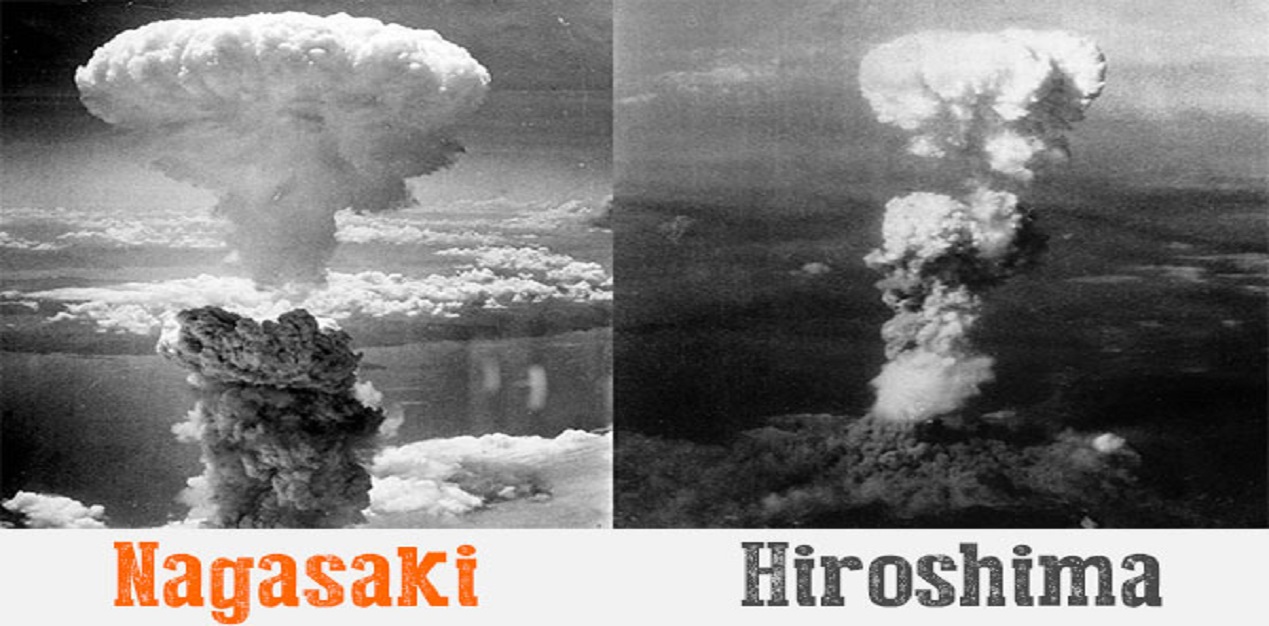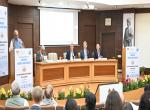The review conference of the Treaty on the Non-Proliferation of Nuclear Weapons was held in New York on 1 August. Japan’s Prime Minister Fumio Kishida became the first Prime Minister of Japan to attend the ministerial-level Review Conference of the NPT at the UN headquarters in New York on 5 August and delivered a speech at the general debate. Last October, Kishida had expressed a desire to attend the conference. As a Hiroshima-based politician, Kishida’s decision to attend the conference was a sign of his personal interest in nuclear disarmament.
The NPT Review Conference was held days before Japan was paying tribute to the victims of the US atomic bombing 77 years ago first on 6 August 1945 in Hiroshima and three days later in Nagasaki, leading Japan to surrender on 15 August 1945, ending the World War II. The two bombings killed 140,000 in Hiroshima and 74,000 in Nagasaki, mostly civilians. This remains the only use of nuclear weapons in armed conflict. Since then, Japan has been observing Hiroshima Day on 6 August and Nagasaki Day on 8 August every year. Japan and the world would like to forget this darker side of its past and the amount of devastation that the country witnessed because of the atomic bombing. The observance of the Hiroshima and Nagasaki day reminds the entire globe about the importance of “peace politics” so that future nuclear wars can be avoided. This experience demonstrated that technology that can bring in welfare for the people can also taken human race into a hostage by annihilating the humanity within minutes. The NPT and disarmament movement to get the world rid of nuclear weapons gained currency. Former President Barack Obama pioneered with his Prague speech of April 2009 and subsequent nuclear summits tried to take this movement a step forward but with little success.
This is a two-part article. The first part analyses the significance of Japan’s atomic bomb experience and its impact on the human psychology which has shaped the thought process in Japan during the entire post-War years. At the same time the changing geopolitical dynamics in the region impinging on Japan’s security could lead to a rethink in the attitude of the Japanese people, thus far averse to anything nuclear, thereby encouraging the government to revisit the nuclear option. The second part shall try to dissect how the Kishida government is likely to respond to the new demand to safeguard the nation’s security. Being a native of Hiroshima, Kishida is intensely anti-nuclear and it is to be seen if his stance shall remain sustainable if the nation’s security becomes further vulnerable.
The Hiroshima Day is a reminder of the futility of war and the necessity of peace and global politics need to be crafted accordingly. Nations need to understand the hard truth that wars are often outcomes of politics between nations, which is why peace politics need to get precedence over politics of reprisals. When the “Enola Gay” B-29 bomber dropped an atomic bomb called “Little Boy” on 6 August 19245 at 8:15 am, the people on their daily routine work were caught unaware and within minutes 140,000 people perished, mostly civilians, injuring many and exposing many more to nuclear radiations, known later as Hibakushas. Even when Japan was pondering what to do, came the second bombing of nuclear weapons on 9 August when the US sent another B-29 Bockscar and Major Charles Sweeney dropped “Fat Man” at 11.02 am in Nagasaki, more powerful than the bomb dropped in Hiroshima.
Since these two tragic dates, Hiroshima and Nagasaki have become the symbol of anti-nuclear movement. Political leaders have been visiting every year on these two dates pledging to make the world nuclear-free and therefore craft their political stances accordingly. The highpoint of this anti-nuclear position came when in 2016, former President Obama became the first sitting US President to visit the site of the US bombing of Hiroshima. At that time, Abe Shinzo, who was the Prime Minister accompanied, reflecting the establishment’s endorsement of anti-nuclear position.
Now there is a new situation that is feared for a review of the existing policy. North Korea’s nuclear development programme has posed a threat to Japan’s security. The Ukraine crisis has again taken the threat of nuclear war a step further. Threat from China is another bother. The cumulative impact of these developments in Japan’s immediate neighbourhood could precipitate a major overhaul of the nation’s security policy. Pragmatic discussions on what kind of deterrence the country could opt is currently debated. If the country’s vulnerability becomes volatile than what is now, the pace of a rethink could be put on fast track.
At the moment, Japan is keen to see that Hiroshima and Nagasaki should be the world’s first and last. Such a stance is ideal but it does not conform to the current narrative of world politics. There seems to be huge gulf between the ideal and reality. It remains unclear how long Japan shall remain able to sustain its long-held stance on nuclear issue when severe threats lurks from its neighbourhood.
Can Japan continue to sit in silence by its anti-nuclear doctrine when the word possesses already 12,705 nuclear warheads and the numbers are increasing? This is what the Stockholm International Peace Research Institute (SIPRI) came out with this figure as of January 2022 in its 13 June announcement. The nuclear threats have been up-scaled when Russia responded to the increasing sanctions from the US and the European Union with threats of using its nuclear weapons.
Further, North Korea continues to defy world opinion and carries out missile launches and nuclear tests banned under international law. Sanctions have failed to bite the North. More worrying is China intends to possess at least 1,000 nuclear warheads by 2030. In view of this, there seems to be a realisation in Japan the hard truth that the Ukraine crisis has led to a global trend of accepting the expansion of nuclear deterrence. It remains to be seen if Japan’s aspirations of realizing a world without nuclear weapons can be realised or would continue to remain a mere will-o-the-wisp.
Thus far, Japan has remained under the US nuclear deterrence and therefore holding back the development of nuclear weapons. Of course, there are constitutional hurdles that impede adopting such a course. But if the nation’s security vulnerability increases and doubts on the US nuclear deterrence come under suspect, a review on Japan’s security posture could be inescapable.
(The paper is the author’s individual scholastic articulation. The author certifies that the article/paper is original in content, unpublished and it has not been submitted for publication/web upload elsewhere, and that the facts and figures quoted are duly referenced, as needed, and are believed to be correct). (The paper does not necessarily represent the organisational stance... More >>
Image Source: https://cdn.countercurrents.org/wp-content/uploads/2016/08/hiroshima-nagasaki.jpg











Post new comment